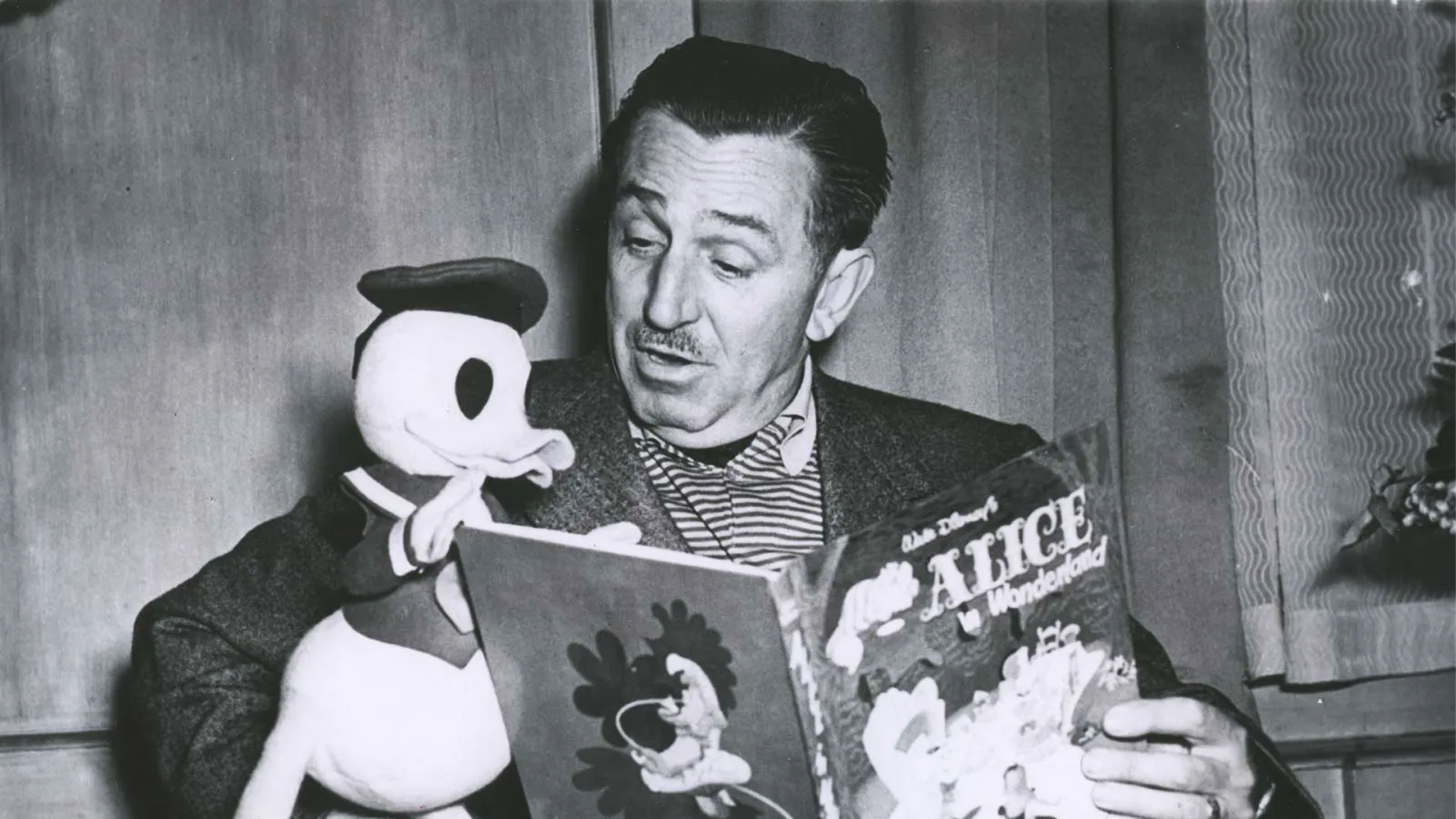Walt Disney

Biography
Walter Elias Disney was born in 1901 in Chicago, Illinois, and grew up in a family that struggled financially, with a strict and demanding father. Despite hardships, he nurtured a love for drawing from a young age, often sketching animals and scenes from his surroundings.
In his early twenties, Disney launched his first animation company, Laugh-O-Gram Studios, which went bankrupt. This failure left him nearly penniless—he reportedly survived on cold canned beans—but it also taught him lessons in resilience and business strategy.
With just $40 and a suitcase, Disney moved to Hollywood in 1923 to start over. Alongside his brother Roy, he built a small animation studio that eventually found success with the character Oswald the Lucky Rabbit—until a distributor took the rights away. On the train ride home from that setback, Disney created Mickey Mouse, turning loss into creative opportunity.
In 1928, Mickey Mouse made his debut in 'Steamboat Willie,' one of the first synchronized sound cartoons. The character became an international icon, symbolizing joy, optimism, and the power of imagination.
Disney took another daring leap in 1937 with 'Snow White and the Seven Dwarfs,' the first full-length animated feature film. Critics called it 'Disney’s Folly,' certain it would fail. Instead, it became a massive success, proving that animation could tell deep, emotional stories and captivate audiences for an entire feature.
The 1955 opening of Disneyland brought storytelling into the real world. Although opening day—dubbed 'Black Sunday'—was riddled with problems, Disney’s persistence turned it into the world’s most famous theme park, inspiring countless others.
Disney’s career was not without personal tolls. At one point, stress and overwork led to a nervous breakdown, yet he returned to create more films, shows, and experiences that redefined entertainment.
By the time of his death in 1966, Disney had built a multimedia empire and inspired generations of artists, storytellers, and dreamers worldwide.
Walt Disney’s story is proof that setbacks don’t define your legacy—your response to them does. He faced bankruptcy, betrayal, public doubt, and personal exhaustion, yet each obstacle became a stepping stone toward something greater. Disney’s work reimagined what entertainment could be, showing that stories have the power to connect generations, shape culture, and inspire innovation. For teens today, his legacy is more than fairy tales and theme parks—it’s a lesson in perseverance, creativity, and believing in ideas even when the world says they won’t work. He reminds us that magic doesn’t just happen; it’s built, often brick by brick, through determination, imagination, and the courage to keep going.
?
How did losing Oswald the Lucky Rabbit push Walt Disney to create Mickey Mouse?
Why was 'Snow White and the Seven Dwarfs' considered a huge risk in 1937?
What challenges did Disneyland face on its opening day, and how did Disney overcome them?
In what ways did Disney’s early life influence his work ethic and creativity?
What lessons from Walt Disney’s career can be applied to overcoming personal setbacks today?
Dig Deeper
Short biography video on Walt Disney, including his early love of drawing, the debut of Mickey Mouse in 'Steamboat Willie,' his feature films 'Snow White and the Seven Dwarfs' and 'Mary Poppins,' and the opening of Disneyland in 1955.
Discover more

Dr. Seuss (Theodor Seuss Geisel)
With galloping rhymes, surreal creatures, and an unmistakable sense of rebellious fun, Dr. Seuss turned the alphabet into an adventure and reading into a radical act of imagination.

Steve Jobs
Steve Jobs, the visionary co-founder of Apple Inc. who revolutionized personal computing, mobile communication, music, and digital design.

Milly Zantow
Long before recycling bins became a normal part of curb‑side life, Milly Zantow invented the numbered triangle system that tells the world which plastics can be recycled.
Further Reading
Stay curious!
